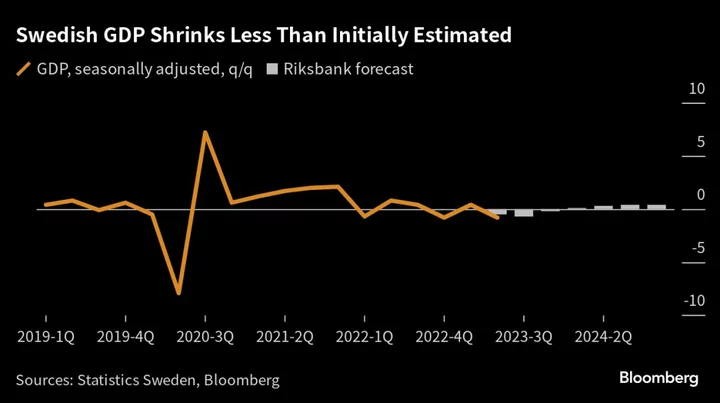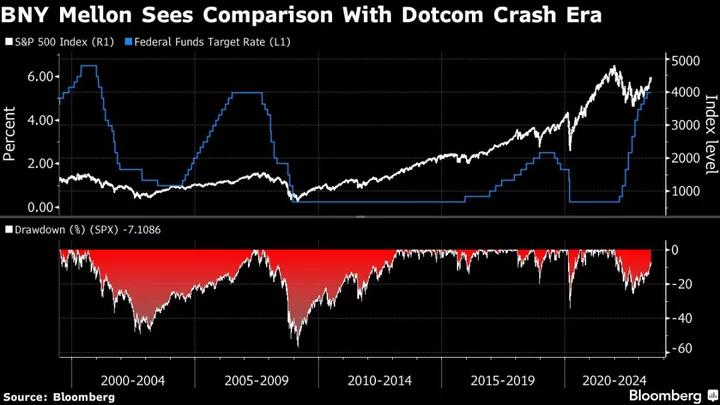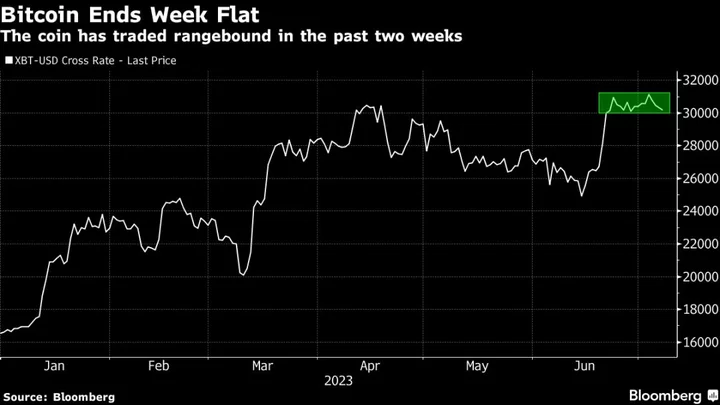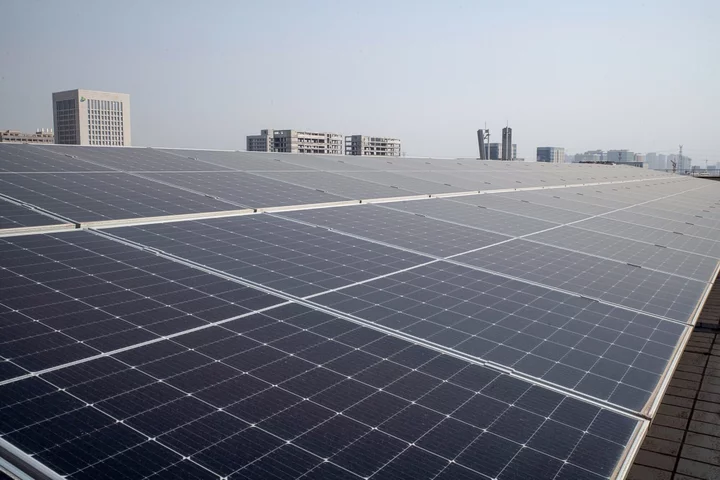A decline in exports dragged down Sweden’s economy in the second quarter, even as output contracted less than previously estimated.
Calendar-adjusted gross domestic product declined by 0.8% in the three months through June, compared with the first quarter, according to figures published by Statistics Sweden on Tuesday. The decline is explained by lower goods exports and smaller inventories, authorities said.
While the data wasn’t as bad as the 1.5% contraction indicated by a preliminary release published in July, it indicates “the Swedish export motor is in trouble,” Michael Grahn, chief economist at Danske Bank A/S, said.
The figures will be an important factor for Sweden’s Riksbank to consider at its monetary policy meeting in September. The central bank is widely expected to raise its benchmark rate to 4% from 3.75%, in another move aimed at containing rapid price increases on services.
The economy last quarter “was generally weak with declines in several of the main components of GDP,” Jessica Engdahl, head of section at the National Accounts Department, said in a statement.
“Net exports decreased, as did investments in inventories,” she said. “Household consumption expenditure was negative for the fourth consecutive quarter.”
The Swedish economy is more vulnerable to rate hikes than most peers as a large share of loans to Swedish households have interest rates fixed on short terms. That has led forecasters to pencil in a deep economic slump, as the Riksbank is also under pressure to raise rates to shore up the krona, which has hit all-time lows against the euro in recent months.
Read More: Sweden’s Economic Forecast Cut at SEB as Households Squeezed
--With assistance from Joel Rinneby.









